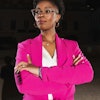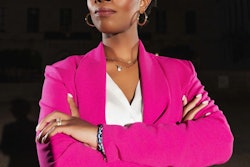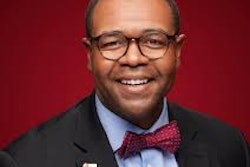My first encounter with Bill Cox and Frank Matthews was quite memorable. It took place in 1984 at a higher education conference at MIT, shortly after they had decided to confront the shortcomings in both the journalistic and academic communities by launching a new publication, Black Issues In Higher Education. In the best spirit of American entrepreneurship, they saw a need and they filled it. They pointed a spotlight on the underrepresentation of Black people in higher education institutions across the country. Since the establishment press chose to ignore this reality, Cox and Matthews stepped forward to address the situation, undeterred by the structural and cultural hurdles that stood in their way.
 Dr. William B. Harvey
Dr. William B. Harvey
The social and political landscape has been shifting and uneven over the 40 years that the Cox-Matthews team has taken on its mission, and considerably less progress has been realized within the academic community than what was hoped for. I have characterized these four decades as follows:
1984-1994 – Restrained Acknowledgement of America’s racial problem
At a glacial pace, historically white colleges and universities were cautiously enrolling limited numbers of Black students, often employing a Black administrator or two to oversee this new clientele, and, within the academic sphere, African American studies courses were appended to the periphery of the curriculum. Black Issues In Higher Education presented a phalanx of stories focused on the lethargic efforts of institutions across the nation, which sent a clear and direct message to the academic community that it was time to live up to the values of inclusivity and fairness that it espoused.
1994-2004 – Institutional Adjustment and Affirmative Inaction
Affirmative action was expected to result in substantially larger numbers of African Americans, Hispanics, and Native Americans as students and faculty members in historically white colleges and universities. But, as the twenty-first century dawned, these groups remained dramatically underrepresented compared to their percentages of the overall population. Partly because conservatives were successful in assigning negative implications to the term “affirmative action,” the expression diversity, equity, and inclusion (DEI) came into use to describe and facilitate processes that resulted in greater access and participation for people from marginalized communities. Cox and Matthews initiated a planning process to change the name of their publication to Diverse: Issues In Higher Education and to expand its focus to include other underserved constituencies besides African Americans.
2004-2014 – Realignment and Internal modifications
Colleges and universities became more aware of factors that negatively impacted people of color and women within the institutions. Expanded curricular offerings and research methodologies provided the impetus for modifications to the racist, patriarchal framework that had defined the academy from its inception. Appointments of chief diversity officers established a senior level administrative person to help develop strategies and approaches to facilitate DEI, which, by this time, was often articulated in institutional goals and values. Diverse: Issues In Higher Education utilized the technological advances of the era to create an electronic version as a counterpart to its print format and developed a daily information sheet to keep its constituents updated on a timely basis.
2014-2024 – Revisionism and the Conservative Onslaught
Although right-wing zealots assail the academy for its liberal posture and values, the academy has been conversative regarding its internal operations. Until the late twentieth century higher education Institutions accepted racism and discrimination as societal norms throughout the country. Refusal to address these practices bestowed intellectual legitimacy on them, despite their contradictions to the national ideals of freedom and justice for all. Conservative forces have marshalled their financial and political influence in efforts to push the higher education community backwards to a time when the presence of people of color within historically white colleges and universities was negligible. Diverse: Issues In Higher Education has rededicated the company to holding higher education to a higher standard so that it can effectively address the needs of an increasingly pluralistic society.
It’s fitting that the new leadership includes Will Cox and Maya Matthews Minter, the offspring of the publication’s founders. They intend to continue the mission that their fathers established to improve the higher education enterprise and to make it more responsive to the interests and concerns of the entire population but, most significantly, to those individuals who come from marginalized communities. We can fully expect that the next four decades of Diverse: Issues In Higher Education will be as innovative and impactful as the past forty years have been.
Dr. William B. Harvey served as Distinguished Scholar at the American Association for Access, Equity, and Diversity in Washington, D.C.



















